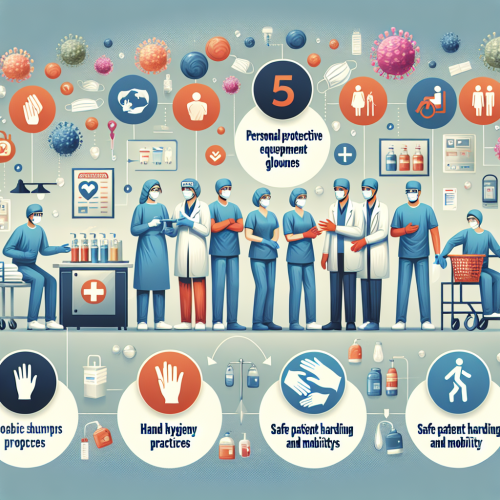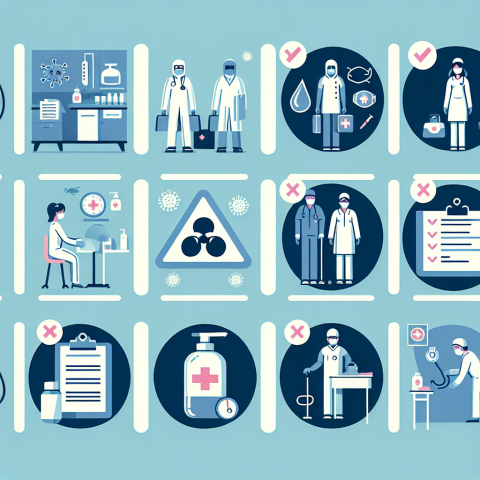<div id="aswift_0_host" style="border: none; height: 0px; width: 0px; margin: 0px; padding: 0px; position: relative; visibility: visible; background-color: transparent; display: inline-block;"><iframe id="aswift_0" style="left: 0; position: absolute; top: 0; border: 0; width: undefinedpx; height: undefinedpx;" tabindex="0" title="Advertisement" src="https://googleads.g.doubleclick.net/pagead/ads?client=ca-pub-5095555671943484&output=html&adk=1812271804&adf=3025194257&abgtt=6&lmt=1743518448&plaf=1%3A2%2C2%3A2%2C7%3A2&plat=1%3A128%2C2%3A128%2C3%3A128%2C4%3A128%2C8%3A128%2C9%3A32776%2C16%3A8388608%2C17%3A32%2C24%3A32%2C25%3A32%2C30%3A1081344%2C32%3A32%2C41%3A32%2C42%3A32&format=0x0&url=https%3A%2F%2Fberkah.bukuipa.co.id%2Fcrm-for-small-business%2F&pra=5&wgl=1&aihb=0&asro=0&ailel=1~2~4~7~8~9~10~11~12~13~14~15~16~17~18~19~20~21~24~29~30~34&aiael=1~2~3~4~7~8~9~10~11~12~13~14~15~16~17~18~19~20~21~24~29~30~34&aicel=33~38&aifxl=29_18~30_19&aiixl=29_5~30_6&aiapm=0.15&aiapmi=0.33938&aiact=0.6&ailct=0.65&uach=WyJXaW5kb3dzIiwiMTAuMC4wIiwieDg2IiwiIiwiMTM0LjAuNjk5OC4xNzgiLG51bGwsMCxudWxsLCI2NCIsW1siQ2hyb21pdW0iLCIxMzQuMC42OTk4LjE3OCJdLFsiTm90OkEtQnJhbmQiLCIyNC4wLjAuMCJdLFsiR29vZ2xlIENocm9tZSIsIjEzNC4wLjY5OTguMTc4Il1dLDBd&dt=1743518448124&bpp=3&bdt=29&idt=26&shv=r20250327&mjsv=m202503260101&ptt=9&saldr=aa&abxe=1&cookie=ID%3D3651206d60da5fe8%3AT%3D1743170648%3ART%3D1743170648%3AS%3DALNI_MYlQbuSb4pcNXIosSBfwE6H4XOloQ&gpic=UID%3D00001079027be501%3AT%3D1743170648%3ART%3D1743170648%3AS%3DALNI_MYFuSH7p919j_leDx7dwdqY2P63gw&eo_id_str=ID%3D04f0325008c424fb%3AT%3D1743170648%3ART%3D1743170648%3AS%3DAA-AfjZafkHQH4jkHC2J7AtwrgSW&nras=1&correlator=5355267299455&frm=20&pv=2&u_tz=420&u_his=18&u_h=768&u_w=1366&u_ah=728&u_aw=1366&u_cd=24&u_sd=1&dmc=8&adx=-12245933&ady=-12245933&biw=1351&bih=641&scr_x=0&scr_y=0&eid=95355972%2C95355974%2C95354563%2C95356499%2C95356505%2C31091324%2C95356788%2C95356798%2C95356928&oid=2&pvsid=4136742074065458&tmod=1956804034&uas=0&nvt=1&fsapi=1&ref=https%3A%2F%2Fberkah.bukuipa.co.id%2Fpage%2F18%2F&fc=1920&brdim=0%2C0%2C0%2C0%2C1366%2C0%2C1366%2C728%2C1366%2C641&vis=1&rsz=%7C%7Cs%7C&abl=NS&fu=32768&bc=31&bz=1&td=1&tdf=2&psd=W251bGwsbnVsbCxudWxsLDNd&nt=1&pgls=CAEaBTYuNy4y&ifi=1&uci=a!1&fsb=1&dtd=38" name="aswift_0" frameborder="0" marginwidth="0" marginheight="0" scrolling="no" sandbox="allow-forms allow-popups allow-popups-to-escape-sandbox allow-same-origin allow-scripts allow-top-navigation-by-user-activation" data-google-container-id="a!1" aria-label="Advertisement" data-load-complete="true"></iframe></div>
<div id="aswift_0_host" style="border: none; height: 0px; width: 0px; margin: 0px; padding: 0px; position: relative; visibility: visible; background-color: transparent; display: inline-block;"><iframe id="aswift_0" style="left: 0; position: absolute; top: 0; border: 0; width: undefinedpx; height: undefinedpx;" tabindex="0" title="Advertisement" src="https://googleads.g.doubleclick.net/pagead/ads?client=ca-pub-5095555671943484&output=html&adk=1812271804&adf=3025194257&abgtt=6&lmt=1743518448&plaf=1%3A2%2C2%3A2%2C7%3A2&plat=1%3A128%2C2%3A128%2C3%3A128%2C4%3A128%2C8%3A128%2C9%3A32776%2C16%3A8388608%2C17%3A32%2C24%3A32%2C25%3A32%2C30%3A1081344%2C32%3A32%2C41%3A32%2C42%3A32&format=0x0&url=https%3A%2F%2Fberkah.bukuipa.co.id%2Fcrm-for-small-business%2F&pra=5&wgl=1&aihb=0&asro=0&ailel=1~2~4~7~8~9~10~11~12~13~14~15~16~17~18~19~20~21~24~29~30~34&aiael=1~2~3~4~7~8~9~10~11~12~13~14~15~16~17~18~19~20~21~24~29~30~34&aicel=33~38&aifxl=29_18~30_19&aiixl=29_5~30_6&aiapm=0.15&aiapmi=0.33938&aiact=0.6&ailct=0.65&uach=WyJXaW5kb3dzIiwiMTAuMC4wIiwieDg2IiwiIiwiMTM0LjAuNjk5OC4xNzgiLG51bGwsMCxudWxsLCI2NCIsW1siQ2hyb21pdW0iLCIxMzQuMC42OTk4LjE3OCJdLFsiTm90OkEtQnJhbmQiLCIyNC4wLjAuMCJdLFsiR29vZ2xlIENocm9tZSIsIjEzNC4wLjY5OTguMTc4Il1dLDBd&dt=1743518448124&bpp=3&bdt=29&idt=26&shv=r20250327&mjsv=m202503260101&ptt=9&saldr=aa&abxe=1&cookie=ID%3D3651206d60da5fe8%3AT%3D1743170648%3ART%3D1743170648%3AS%3DALNI_MYlQbuSb4pcNXIosSBfwE6H4XOloQ&gpic=UID%3D00001079027be501%3AT%3D1743170648%3ART%3D1743170648%3AS%3DALNI_MYFuSH7p919j_leDx7dwdqY2P63gw&eo_id_str=ID%3D04f0325008c424fb%3AT%3D1743170648%3ART%3D1743170648%3AS%3DAA-AfjZafkHQH4jkHC2J7AtwrgSW&nras=1&correlator=5355267299455&frm=20&pv=2&u_tz=420&u_his=18&u_h=768&u_w=1366&u_ah=728&u_aw=1366&u_cd=24&u_sd=1&dmc=8&adx=-12245933&ady=-12245933&biw=1351&bih=641&scr_x=0&scr_y=0&eid=95355972%2C95355974%2C95354563%2C95356499%2C95356505%2C31091324%2C95356788%2C95356798%2C95356928&oid=2&pvsid=4136742074065458&tmod=1956804034&uas=0&nvt=1&fsapi=1&ref=https%3A%2F%2Fberkah.bukuipa.co.id%2Fpage%2F18%2F&fc=1920&brdim=0%2C0%2C0%2C0%2C1366%2C0%2C1366%2C728%2C1366%2C641&vis=1&rsz=%7C%7Cs%7C&abl=NS&fu=32768&bc=31&bz=1&td=1&tdf=2&psd=W251bGwsbnVsbCxudWxsLDNd&nt=1&pgls=CAEaBTYuNy4y&ifi=1&uci=a!1&fsb=1&dtd=38" name="aswift_0" frameborder="0" marginwidth="0" marginheight="0" scrolling="no" sandbox="allow-forms allow-popups allow-popups-to-escape-sandbox allow-same-origin allow-scripts allow-top-navigation-by-user-activation" data-google-container-id="a!1" aria-label="Advertisement" data-load-complete="true"></iframe></div>
<div id="wsggehmq7ro1742007608622" class="widget-visible"><iframe id="toute35u39vg1742007608683" class="" style="outline: none !important; visibility: visible !important; resize: none !important; box-shadow: none !important; overflow: visible !important; background: none !important; opacity: 1 !important; filter: alpha(opacity=100) !important; -ms-filter: progid:DXImageTransform.Microsoft.Alpha(Opacity 1}) !important; -mz-opacity: 1 !important; -khtml-opacity: 1 !important; top: auto !important; right: 20px !important; bottom: 20px !important; left: auto !important; position: fixed !important; border: 0 !important; min-height: 60px !important; min-width: 64px !important; max-height: 60px !important; max-width: 64px !important; padding: 0 !important; margin: 0 !important; -moz-transition-property: none !important; -webkit-transition-property: none !important; -o-transition-property: none !important; transition-property: none !important; transform: none !important; -webkit-transform: none !important; -ms-transform: none !important; width: 64px !important; height: 60px !important; display: block !important; z-index: 1000001 !important; background-color: transparent !important; cursor: none !important; float: none !important; border-radius: unset !important; pointer-events: auto !important; clip: auto !important; color-scheme: light !important;" title="chat widget" src="about:blank" width="64px" height="60px" frameborder="0" scrolling="no"></iframe><iframe id="qg5a0sbcvvq81742007608768" class="" style="outline: none !important; visibility: visible !important; resize: none !important; box-shadow: none !important; overflow: visible !important; background: none !important; opacity: 1 !important; filter: alpha(opacity=100) !important; -ms-filter: progid:DXImageTransform.Microsoft.Alpha(Opacity 1}) !important; -mz-opacity: 1 !important; -khtml-opacity: 1 !important; top: auto !important; right: 10px !important; bottom: 90px !important; left: auto !important; position: fixed !important; border: 0 !important; min-height: 448px !important; min-width: 350px !important; max-height: 448px !important; max-width: 350px !important; padding: 0 !important; margin: 0 !important; -moz-transition-property: none !important; -webkit-transition-property: none !important; -o-transition-property: none !important; transition-property: none !important; transform: none !important; -webkit-transform: none !important; -ms-transform: none !important; width: 350px !important; height: 448px !important; display: none !important; z-index: 1000002 !important; background-color: transparent !important; cursor: none !important; float: none !important; border-radius: 5px !important; pointer-events: auto !important; clip: auto !important; color-scheme: light !important;" title="chat widget" src="about:blank" width="350px" height="448px" frameborder="0" scrolling="no"></iframe><iframe id="osf4rfasrrqo1742007608733" class="" style="outline: none !important; visibility: visible !important; resize: none !important; box-shadow: none !important; overflow: visible !important; background: none !important; opacity: 1 !important; filter: alpha(opacity=100) !important; -ms-filter: progid:DXImageTransform.Microsoft.Alpha(Opacity 1}) !important; -mz-opacity: 1 !important; -khtml-opacity: 1 !important; top: auto !important; right: 20px !important; bottom: 100px; left: auto !important; position: fixed !important; border: 0 !important; min-height: 55px !important; min-width: 360px !important; max-height: 55px !important; max-width: 360px !important; padding: 0 !important; margin: 0 !important; -moz-transition-property: none !important; -webkit-transition-property: none !important; -o-transition-property: none !important; transition-property: none !important; transform: none !important; -webkit-transform: none !important; -ms-transform: none !important; width: 360px !important; height: 55px !important; display: none !important; z-index: auto !important; background-color: transparent !important; cursor: none !important; float: none !important; border-radius: unset !important; pointer-events: auto !important; clip: auto !important; color-scheme: light !important;" title="chat widget" src="about:blank" width="360px" height="55px" frameborder="0" scrolling="no"></iframe><iframe id="uf2tcnufecv81742007608707" class="" style="outline: none !important; visibility: visible !important; resize: none !important; box-shadow: none !important; overflow: visible !important; background: none !important; opacity: 1 !important; filter: alpha(opacity=100) !important; -ms-filter: progid:DXImageTransform.Microsoft.Alpha(Opacity 1}) !important; -mz-opacity: 1 !important; -khtml-opacity: 1 !important; top: auto !important; right: 0px !important; bottom: 30px !important; left: auto !important; position: fixed !important; border: 0 !important; min-height: 95px !important; min-width: 124px !important; max-height: 95px !important; max-width: 124px !important; padding: 0 !important; margin: 0px 0 0 0 !important; -moz-transition-property: none !important; -webkit-transition-property: none !important; -o-transition-property: none !important; transition-property: none !important; transform: rotate(0deg) translateZ(0); -webkit-transform: rotate(0deg) translateZ(0); -ms-transform: rotate(0deg) translateZ(0); width: 124px !important; height: 95px !important; display: block !important; z-index: 1000002 !important; background-color: transparent !important; cursor: none !important; float: none !important; border-radius: unset !important; pointer-events: auto !important; clip: auto !important; color-scheme: light !important; -moz-transform: rotate(0deg) translateZ(0); -o-transform: rotate(0deg) translateZ(0); transform-origin: 0; -moz-transform-origin: 0; -webkit-transform-origin: 0; -o-transform-origin: 0; -ms-transform-origin: 0;" title="chat widget" src="about:blank" width="124px" height="95px" frameborder="0" scrolling="no"></iframe></div>
<div style="color-scheme: initial !important; forced-color-adjust: initial !important; mask: initial !important; math-depth: initial !important; position: initial !important; position-anchor: initial !important; text-size-adjust: initial !important; appearance: initial !important; color: initial !important; font: initial !important; font-palette: initial !important; font-synthesis: initial !important; position-area: initial !important; text-orientation: initial !important; text-rendering: initial !important; text-spacing-trim: initial !important; -webkit-font-smoothing: initial !important; -webkit-locale: initial !important; -webkit-text-orientation: initial !important; -webkit-writing-mode: initial !important; writing-mode: initial !important; zoom: initial !important; accent-color: initial !important; place-content: initial !important; place-items: initial !important; place-self: initial !important; alignment-baseline: initial !important; anchor-name: initial !important; anchor-scope: initial !important; animation-composition: initial !important; animation: initial !important; app-region: initial !important; aspect-ratio: initial !important; backdrop-filter: initial !important; backface-visibility: initial !important; background: initial !important; background-blend-mode: initial !important; baseline-shift: initial !important; baseline-source: initial !important; block-size: initial !important; border-block: initial !important; border: initial !important; border-radius: initial !important; border-collapse: initial !important; border-end-end-radius: initial !important; border-end-start-radius: initial !important; border-inline: initial !important; border-start-end-radius: initial !important; border-start-start-radius: initial !important; inset: initial !important; box-decoration-break: initial !important; box-shadow: initial !important; box-sizing: initial !important; break-after: initial !important; break-before: initial !important; break-inside: initial !important; buffered-rendering: initial !important; caption-side: initial !important; caret-color: initial !important; clear: initial !important; clip: initial !important; clip-path: initial !important; clip-rule: initial !important; color-interpolation: initial !important; color-interpolation-filters: initial !important; color-rendering: initial !important; columns: initial !important; column-fill: initial !important; gap: initial !important; column-rule: initial !important; column-span: initial !important; contain: initial !important; contain-intrinsic-block-size: initial !important; contain-intrinsic-size: initial !important; contain-intrinsic-inline-size: initial !important; container: initial !important; content: initial !important; content-visibility: initial !important; counter-increment: initial !important; counter-reset: initial !important; counter-set: initial !important; cursor: initial !important; cx: initial !important; cy: initial !important; d: initial !important; display: initial !important; dominant-baseline: initial !important; empty-cells: initial !important; field-sizing: initial !important; fill: initial !important; fill-opacity: initial !important; fill-rule: initial !important; filter: initial !important; flex: initial !important; flex-flow: initial !important; float: initial !important; flood-color: initial !important; flood-opacity: initial !important; grid: initial !important; grid-area: initial !important; height: initial !important; hyphenate-character: initial !important; hyphenate-limit-chars: initial !important; hyphens: initial !important; image-orientation: initial !important; image-rendering: initial !important; initial-letter: initial !important; inline-size: initial !important; inset-block: initial !important; inset-inline: initial !important; interpolate-size: initial !important; isolation: initial !important; letter-spacing: initial !important; lighting-color: initial !important; line-break: initial !important; list-style: initial !important; margin-block: initial !important; margin: initial !important; margin-inline: initial !important; marker: initial !important; mask-type: initial !important; math-shift: initial !important; math-style: initial !important; max-block-size: initial !important; max-height: initial !important; max-inline-size: initial !important; max-width: initial !important; min-block-size: initial !important; min-height: initial !important; min-inline-size: initial !important; min-width: initial !important; mix-blend-mode: initial !important; object-fit: initial !important; object-position: initial !important; object-view-box: initial !important; offset: initial !important; opacity: initial !important; order: initial !important; orphans: initial !important; outline: initial !important; outline-offset: initial !important; overflow-anchor: initial !important; overflow-clip-margin: initial !important; overflow-wrap: initial !important; overflow: initial !important; overlay: initial !important; overscroll-behavior-block: initial !important; overscroll-behavior-inline: initial !important; overscroll-behavior: initial !important; padding-block: initial !important; padding: initial !important; padding-inline: initial !important; page: initial !important; page-orientation: initial !important; paint-order: initial !important; perspective: initial !important; perspective-origin: initial !important; pointer-events: initial !important; position-try: initial !important; position-visibility: initial !important; quotes: initial !important; r: initial !important; resize: initial !important; rotate: initial !important; ruby-align: initial !important; ruby-position: initial !important; rx: initial !important; ry: initial !important; scale: initial !important; scroll-behavior: initial !important; scroll-initial-target: initial !important; scroll-margin-block: initial !important; scroll-margin: initial !important; scroll-margin-inline: initial !important; scroll-padding-block: initial !important; scroll-padding: initial !important; scroll-padding-inline: initial !important; scroll-snap-align: initial !important; scroll-snap-stop: initial !important; scroll-snap-type: initial !important; scroll-timeline: initial !important; scrollbar-color: initial !important; scrollbar-gutter: initial !important; scrollbar-width: initial !important; shape-image-threshold: initial !important; shape-margin: initial !important; shape-outside: initial !important; shape-rendering: initial !important; size: initial !important; speak: initial !important; stop-color: initial !important; stop-opacity: initial !important; stroke: initial !important; stroke-dasharray: initial !important; stroke-dashoffset: initial !important; stroke-linecap: initial !important; stroke-linejoin: initial !important; stroke-miterlimit: initial !important; stroke-opacity: initial !important; stroke-width: initial !important; tab-size: initial !important; table-layout: initial !important; text-align: initial !important; text-align-last: initial !important; text-anchor: initial !important; text-box: initial !important; text-combine-upright: initial !important; text-decoration: initial !important; text-decoration-skip-ink: initial !important; text-emphasis: initial !important; text-emphasis-position: initial !important; text-indent: initial !important; text-overflow: initial !important; text-shadow: initial !important; text-transform: initial !important; text-underline-offset: initial !important; text-underline-position: initial !important; text-wrap: initial !important; timeline-scope: initial !important; touch-action: initial !important; transform: initial !important; transform-box: initial !important; transform-origin: initial !important; transform-style: initial !important; transition: initial !important; translate: initial !important; user-select: initial !important; vector-effect: initial !important; vertical-align: initial !important; view-timeline: initial !important; view-transition-class: initial !important; view-transition-name: initial !important; visibility: initial !important; border-spacing: initial !important; -webkit-box-align: initial !important; -webkit-box-decoration-break: initial !important; -webkit-box-direction: initial !important; -webkit-box-flex: initial !important; -webkit-box-ordinal-group: initial !important; -webkit-box-orient: initial !important; -webkit-box-pack: initial !important; -webkit-box-reflect: initial !important; -webkit-line-break: initial !important; -webkit-line-clamp: initial !important; -webkit-mask-box-image: initial !important; -webkit-print-color-adjust: initial !important; -webkit-rtl-ordering: initial !important; -webkit-ruby-position: initial !important; -webkit-tap-highlight-color: initial !important; -webkit-text-combine: initial !important; -webkit-text-decorations-in-effect: initial !important; -webkit-text-fill-color: unset !important; -webkit-text-security: initial !important; -webkit-text-stroke: initial !important; -webkit-user-drag: initial !important; white-space-collapse: initial !important; widows: initial !important; width: initial !important; will-change: initial !important; word-break: initial !important; word-spacing: initial !important; x: initial !important; y: initial !important; z-index: initial !important;"></div>








